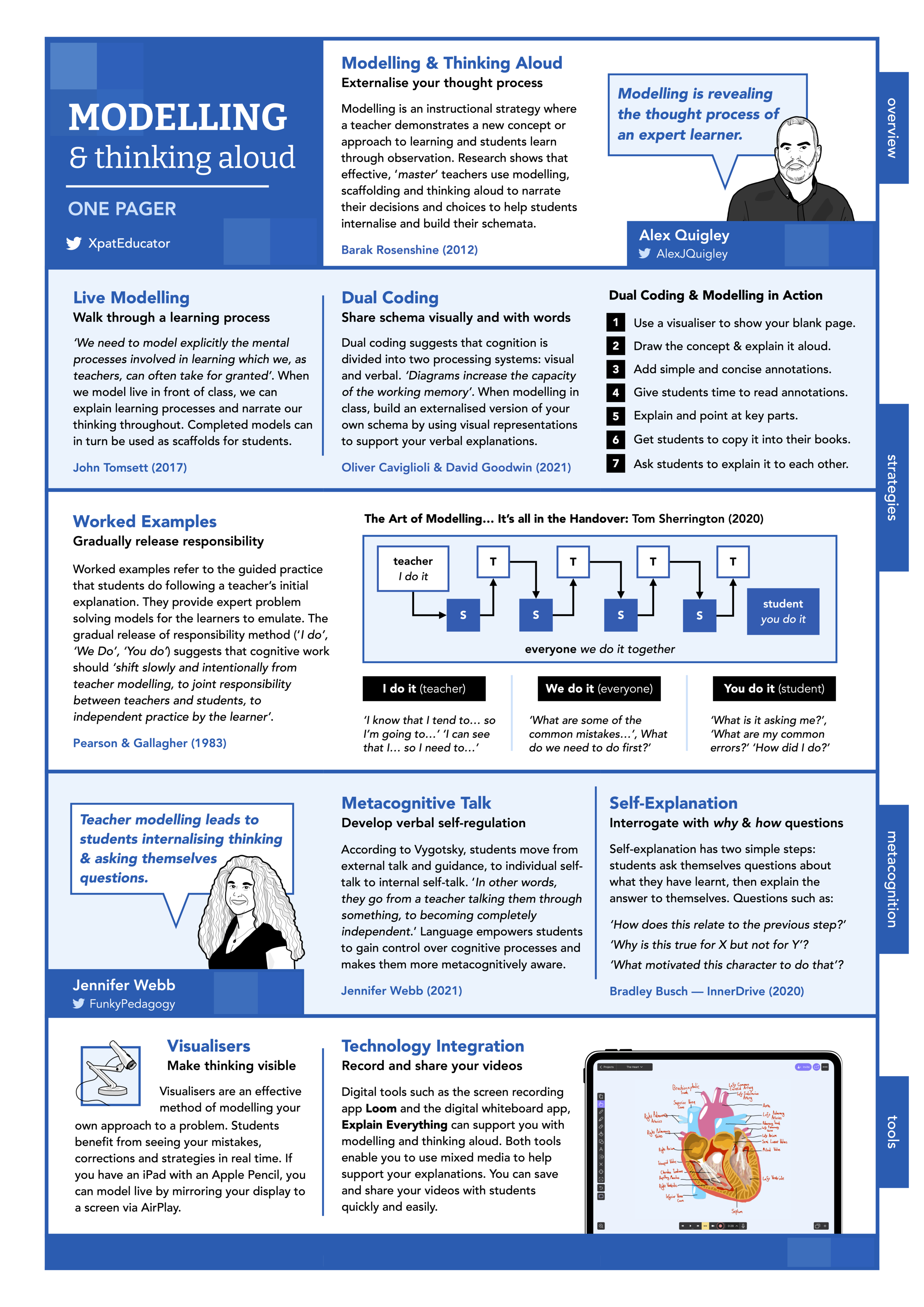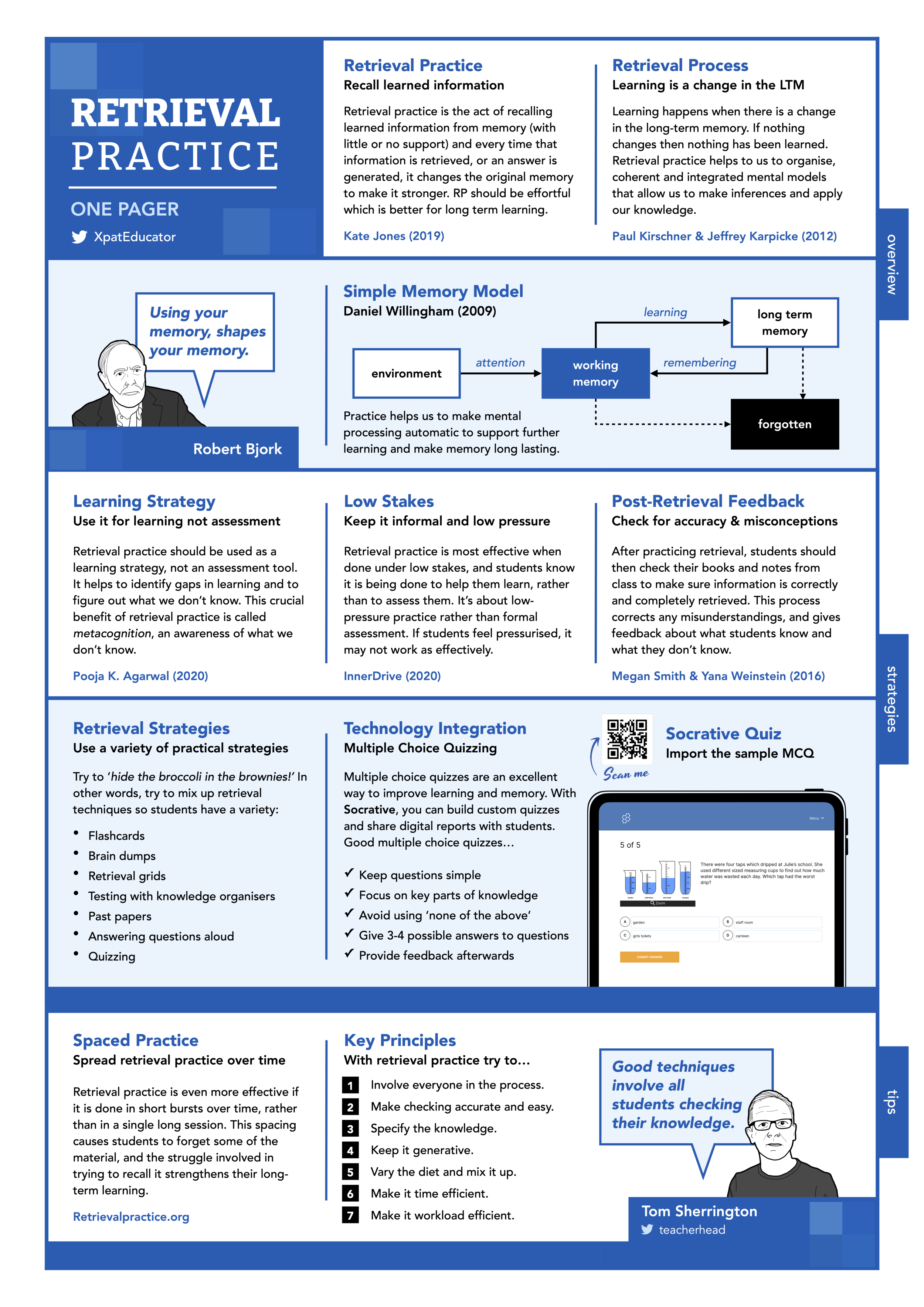Developing an Evidence-Informed Culture: 5 Essential Ingredients
Educational research has the power to supercharge a school’s teaching and learning culture. The question is, how can PD and school leaders, prioritise teacher development and embed these insights into the fabric of daily teaching practices and school culture?
In my journey through the educational landscape over the past decade and a half, I've witnessed the emergence and gradual disappearance of numerous classroom trends. Learning Styles, Multiple Intelligences, and Brain Gym to name a few, have come and gone with little impact. Like unwelcome apparitions, a few of these debunked ideas still haunt the profession today. Having somewhat naively fallen victim to these initiatives myself, I can confidently say I am now more experienced at navigating around the bogs and mires that teachers often get sucked into.
So, what changed?
Well, in recent years, the explosive rise of cognitive science has realigned teaching practices for many educators and influenced the direction of professional development in many schools. In my own schools and professional interactions online, I noticed that things had started to mature (especially in the UK), and educators began to approach teaching through a more measured and evidence-informed perspective. This rise marked the beginning of a transformative shift in my approach towards teaching - a shift towards practices not just embraced for their novelty, but for their proven impact on learning.
The wave of edu-blogs, teacher-authored literature, and discourse on social media fine-tuned my own day-to-day teaching. I was steered into practical educational ideas and common-sense reports such as Professor Robert Coe’s ‘What Makes Great Teaching?’ in 2014. Around this time, Coe outlined a series of ‘poor proxies for learning’ (see the list below) that, even now, offer a reminder of the pitfalls of focusing too heavily on task completion and student compliance:
-
Students are busy: lots of work is done (especially written work).
-
Students are getting attention: feedback, explanations.
-
Students are getting attention: feedback, explanations.
-
The classroom is ordered, calm and under control.
-
(At least some) students have supplied correct answers.
-
Curriculum has been ‘covered’ (presented to students in some form).
“I have come up with a simple formulation: learning happens when people have to think hard.”
Professor Robert Coe
It’s undeniable that research consistently points to effective teaching being grounded in the art of instructional practices that promote hard thinking (modelling, explaining, practising, questioning and providing feedback). In ‘Principles of Instruction’ (2012) the influential Barak Rosenshine pin-points these elements as essential for learning because they take into account the limitations of our cognitive architecture. What’s more, work by Professor Daniel Willingham explains that learning occurs when there is a change in long-term memory and this change only happens when students actively think!
‘Memory is the residue of thought.’
Daniel Willingham
Such nuggets of wisdom have the power to supercharge a school’s teaching and learning culture. The question is, how can PD and school leaders, prioritise teacher development and embed these insights into the fabric of daily teaching practices and school culture?
It’s certainly not easy but here are my five essential ingredients to help put this gargantuan task into action:
1. Establish a Shared Understanding
Creating a strong evidence-informed culture stems from a shared understanding across the school. In other words, staff should be able to articulate what successful teaching looks like in their context and explain the underlying beliefs behind it. For example, when creating a strategic development plan, the school might agree on the following overarching principle about setting high expectations: “We expect excellence from ALL students and make learning desirably difficult SO THAT everyone thinks hard and strives to achieve their best.” This principle would shape subsequent PD opportunities tied to Bjork and Bjork’s research on ‘Desirable Difficulties' (1994) or even Berger’s work on embedding an ‘Ethic of Excellence’ (2003).
2. Understand How Learning Happens
To be truly evidence-informed, educators should possess an understanding of how learning happens, guided by models from cognitive science such as Daniel Willingham’s ‘Simple Memory Model’ (see Oliver Caviglioli’s wonderful diagram). Having background knowledge about cognition such as working memory limitations, and long-term memory transfer helps teachers to integrate research-based practices with nuance. Crucially, these are fundamental aspects of the science of learning and should be threaded throughout PD workshops, coaching programmes and department meetings to help teachers establish a common language about the learning process. Resources like my own book, ‘Teaching One-Pagers’ provide busy teachers with a quick way to grasp educational evidence in a concise format. Engaging in professional discussions sparks an interest in delving deeper, encouraging ongoing learning, discovery, and self-improvement.
Daniel Willingham’s ‘Simple Model of the Mind’ as interpreted by Oliver Caviglioli (image reproduced with kind permission from @olicav)
3. Build Trust and Autonomy
Creating an environment where educators can openly discuss challenges and learn from each other is foundational. Respectful professional relationships focused on teacher development (not accountability) can accelerate a thriving culture. Supportive instructional coaching meetings, edu-book clubs, and informal drop-in observations all assist in building trust and peer collaboration. For example, if a school decides to implement an instructional coaching programme, a key focus of each cycle should be placed on teachers’ personal needs by providing them with a sense of autonomy in selecting the right teaching strategies to help them make achievable steps toward improvement. The digital instructional coaching platform Steplab is an excellent tool to support teachers in making improvements whilst boosting staff relationships.
4. Create Context-Specific Professional Development
Professional growth opportunities should be consistently tailored to meet the needs and challenges of the school context. Targeted PD ensures that teaching strategies are not only evidence-based but also relevant and effective in addressing the specific ‘learning problems’ that arise in the classroom. For example, designated PD workshops or coaching cycles might address the school’s strategic goal of embedding formative feedback to close the learning gap in Year 10 and 11 classes. Teachers might work to implement high-impact strategies such as whole-class feedback or Dylan Wiliam’s ‘Four Quarters Marking’ method to help reduce workload. Such initiatives require subsequent evaluation and refinement over time to ensure the school is continuously adapting PD to improve learning outcomes for students.
5. Curate Essential Teaching Strategies
Evidence-informed teachers build a repertoire of essential teaching methods in alignment with the school’s pedagogical priorities. It's important for teaching strategies to be grounded in research while also being adaptable, allowing teachers the freedom to tailor them according to their personal teaching style or classroom dynamics. For example, Mrs Smith might introduce ‘Cold Calling’ into her teaching to support the school’s drive for more accountable questioning. However, within this framework she may encourage students to jot down their answers to the question in their books or on mini-whiteboards before sharing with the class in order to reduce anxiety and create a safe low-stakes environment. Tom Sherrington and Oliver Caviglioli’s Teaching WalkThrus are powerful resources containing context-free strategies that are incredibly helpful for schools curating evidence-informed ‘playbooks’.
These five essential ingredients can only be mixed together by school leaders with a clear strategic vision and framework that is committed to teacher development. However, it is understandable that the biggest barrier to engaging with research is time. Time-poor classroom teachers do not have the time (or head space) to jump in at the deep end. As John Sweller et al (2019) explain, “Human cognitive processing is heavily constrained by our limited working memory, which can only process a limited number of information elements at a time.” With this in mind, the summarisation and simple distribution of information (through one-pagers, podcasts, newsletters, guidance reports and blogs) is crucial.
This is by no means a fail-safe recipe but when executed with clarity, the above ingredients can significantly shift a school’s culture. After all, it is our professional obligation to continuously improve our practice, weed out ineffective habits and implement educational evidence so that we can improve learning outcomes for our young people.
FREE ONE-PAGER
Download the one-page summary for this post: ‘5 Essential Ingredients for Developing an Evidence-Informed Culture
-
Coe, R. (2015). ‘Centre for Evaluating and Monitoring, What Makes Great Teaching?’. IB World Regional Conference (AEM) [Presentation], 31 October.
Willingham, D. T. (2010). Why Don’t Students Like School?: A Cognitive Scientist Answers Questions About How the Mind Words and What It Means for the Classroom. Jossey-Bass.
Sweller, J., van Merriënboer, J. J. G. and Paas, F. (2019). ‘Cognitive Architecture and Instructional Design: 20 Years Later’, Educational Psychology Review, 31(2), pp. 261–292.
One-Pagers: Teaching Summaries
As CPD coodinator at my school, I wanted a simple way for busy teachers to engage with evidence based practice and share ideas about good teaching. One-pagers are practical, bite-sized A4 summaries of context-free teaching strategies that help educators reflect on their practice and check their knowledge and understanding.
As CPD coodinator at my school, I wanted a simple way for busy teachers to engage with evidence based practice and share ideas about good teaching. One-pagers are practical, bite-sized A4 summaries of context-free teaching strategies that help educators reflect on their practice and check their knowledge and understanding.
I have had a lots of positive feedback from teachers on Twitter who love the A4 format as it is accessible and succinct. The grid layout and design (clearly inspired by the brilliant Oliver Caviglioli) helps to break down and categorise information so it is easy to read and process. I included a range of educational voices who have inspired my own practice over the years — many of these educators I follow on Twitter and have a solid reputation sharing evidence based ideas. One of which, Tom Sherrington hit the nail on the head in his tweet explaining my one-pager:
Summary 1: Feedback
This is the new and updated feedback one-pager. As you can see, Dylan Wiliam’s work underpins the information on this summary. However, it now includes actionable feedback strategies (Tom Sherrington); whole class feedback (Andrew Atherton) and a peer feedback section based on Ron Berger’s ‘kind, specific and helpful’ approach.
Summary 2: Modelling & Thinking Aloud
This summary was originally going to be on metacognition. However, I decided to keep the one-page format practical and teacher focused rather than just breaking down heavy research. As a result, I interspersed critical points about metacognition and how it relates to modelling and thinking aloud process.
Summary 3: Retrieval Practice
I use retrieval practice strategies all of the time in my own teaching. This summary offers a whole heap of ideas and reminders. Originally, I made a mistake by indlcuding the (out-dated), ‘Multi-store Model of Memory’ diagram. After some brilliant feedback on Twitter, I quickly changed this to Daniel Willingham’s ‘Simple Memory Model’. Much better!
Request a One-Pager
Have an idea for a great one-pager? Please feel free to get in touch on Twitter or leave a comment below.
Download
If you are going to share the ‘One-pager: Teaching Summaries’ PDF online or in your school, please credit me - Jamie Clark (@XpatEducator). Thanks for the amazing response and keep a look out for more one-pagers coming soon!












